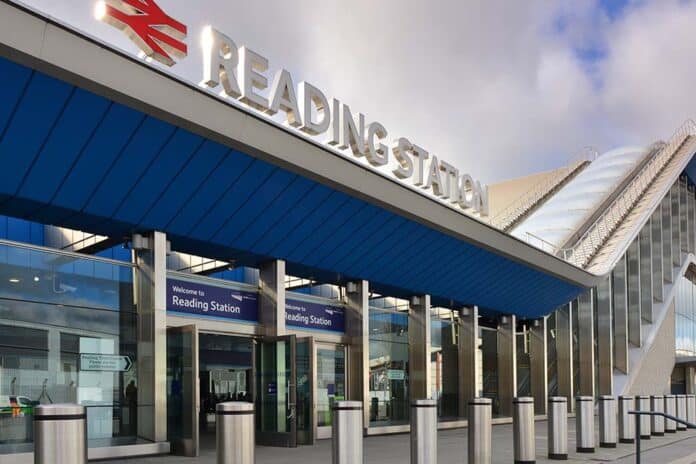An new project to improve carbon emissions and energy performance at Reading station is underway — potentially improving the station’s energy performance by about 20%.
Sensors will be installed across Reading station that will capture live, real-time data on the station’s energy usage in an effort to help cut the station’s carbon emissions and drive up energy performance.
This innovative approach to understanding and improving the station’s energy performance is thanks to a specialist computer modelling platform that has developed a ‘digital twin’ of the station including a simulation of its current energy usage. Using existing, historical data and modelling, a number of opportunities have been identified that are predicted could result in around a 20% improvement on the station’s carbon emissions and energy performance.
- PAULEY leads UK-first ‘augmented reality digital twin’ railway project with HS1
- How HS2 will maintain its network using Virtual Reality and ‘digital twin’ technology
- Fugro wins Network Rail contract to deliver gauging survey and ‘digital twin’ of Scotland’s Railway
Network Rail has team up with Atkins – a member of the SNC-Lavalin Group – and Cardiff University to develop this ‘digital twin’ of Reading station, utilising Cardiff University’s Computational Urban Sustainability Platform (CUSP).
Using this data and computer modelling to create baselines for the station’s energy consumption and carbon emissions, CUSP has been used to map out ways of improving the station’s performance via energy efficiency measures whilst exploring further possible changes and the potential impact this could have on making additional energy savings.
A number of ways to reduce energy expenditure and carbon emissions with minimal costs have been identified, including:
- Improved lighting controls such as dimming when an area of the station is not in use.
- Turning off machinery such as escalators when not in use or overnight when train services aren’t in operation.
In addition to the data being collected by the sensors at the station, passenger numbers and research to understand passenger and station-user behaviour will also be recorded to understand how identified energy savings might impact their safety and experiences when in the station.
It is hoped, following the energy and carbon savings being realised at Reading station, this technology can be utilised across the rail network to support Network Rail in its commitment to reducing its carbon footprint.
Adam De Benedictis, Network Rail’s Regional Energy & Carbon Manager, said: “We’re delighted to be working with Atkins on this innovative project which will help us gain a better understanding of complex assets – such as Reading station – and their predicted performance, allowing us to confidently identify and deliver energy efficiency measures and ultimately manage our assets effectively.
“As an organisation, we are committed to reducing our carbon emissions and playing our part in helping combat global warming while ensuring passengers’ experiences in our stations and on our railways are safe, reliable and comfortable.”
Nick Tune, Technical & Technology Director at Atkins, said: “This is an important milestone as we look to harness data and technology to improve delivery at every stage of an asset’s life.
“Digital twins are the centrepiece of this shift which is giving us the information needed to not only identify opportunities to improve an asset’s energy performance but to interrogate future scenarios, explore further recommendations and tell us how those interventions will work with an unprecedented degree of certainty.”



































 0113 2082620
0113 2082620 info@railbusinessdaily.com
info@railbusinessdaily.com 15 Mariner Court, Wakefield WF4 3FL
15 Mariner Court, Wakefield WF4 3FL

